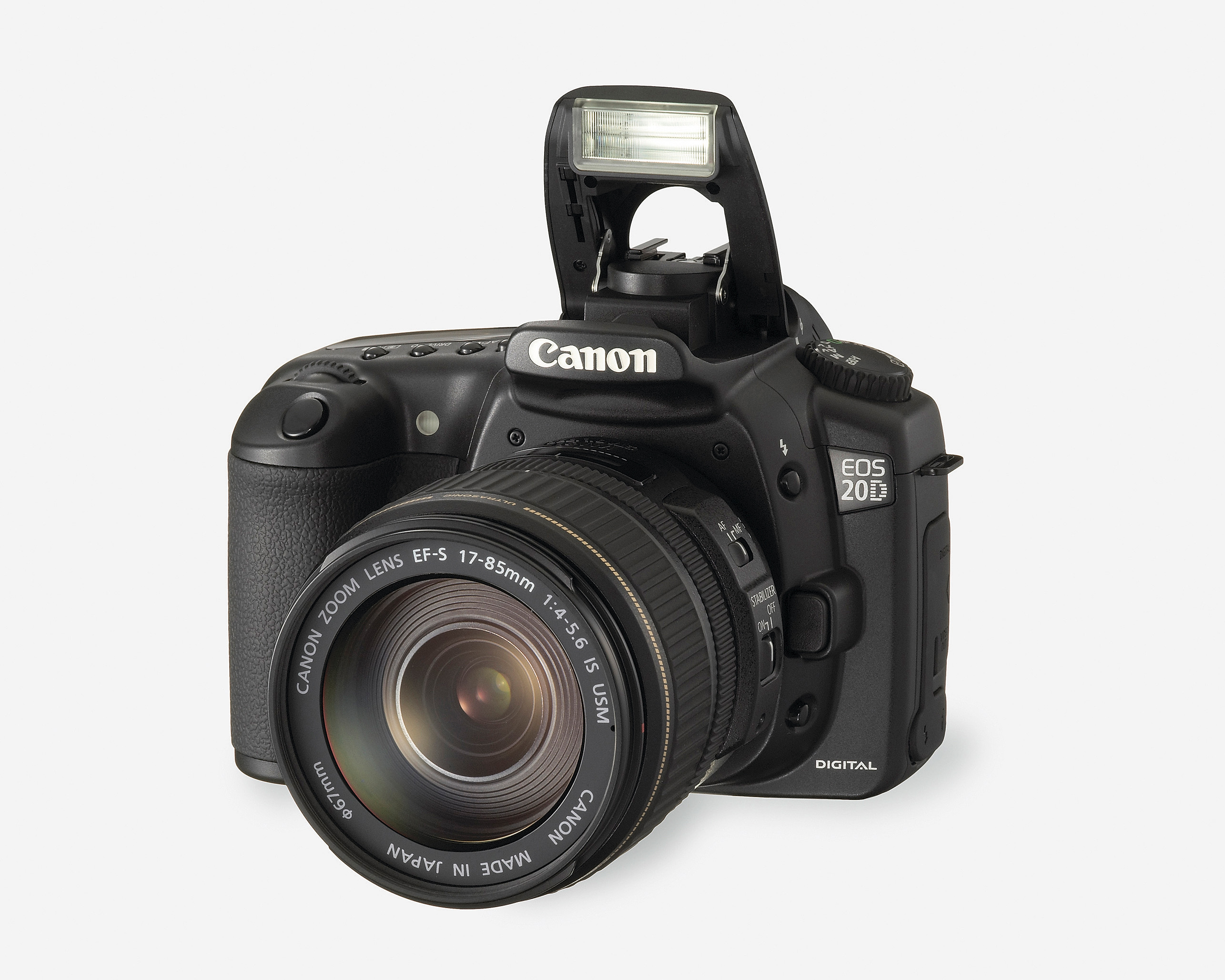TechRadar Verdict
This is an awesome digital SLR that really cuts the mustard
Pros
- +
Fantastic image quality
Compact and light
Fast shutter speed
Cons
- -
The Nikon D70 is still a favourite
Why you can trust TechRadar
Still haven't switched from a film SLR camera to a digital SLR, and you believe you can't be persuaded? Well prepare to be swayed, for you may well change your mind once you see the images from Canon's 8.2-megapixel (yes, we did say 8.2...) EOS 20D SLR. It has all the makings of a top-notch SLR for both pro photographers and serious hobbyists.
Compact and light enough to tote around without making you feel like you're pumping iron, the EOS 20D has a sturdy magnesium body with a matteblack finish, nicely accentuated by the slip-proof leather-like material on the grip side.
The built-in pop-up flash provides excellent wide-angle coverage, automatically adjusting its intensity for well-balanced exposures. Canon's range of dedicated flashguns provides a more powerful and better quality of illumination, and the 20D also includes a hot shoe and a PC flash terminal for powerful lighting options in the studio.
Although the power switch is awkwardly located at the back of the camera - right at the bottom - the other controls are well positioned; just read the quick-start guide and begin shooting. For beginners, Canon has included mode settings: portrait, landscape, close-ups, action, and night portrait with flash.
It also provides aperture and shutter priority modes, full manual exposure, and a plethora of professional features for the experienced photographer. In fact, the 20D is a more professional version of Canon's recently released EOS 350D, with extra options. Both cameras share the same sensor, but the firmware differs.
Memory-hungry
To use the 20D you'll need high-capacity memory cards (not included) to store JPEG images that can be as big as 3.6MB each. RAW files weigh in at 8.7MB (expanded file sizes are 23.4MB), but you don't have to shoot at 8.2 megapixels; both 4- and 2-megapixel resolutions are available if you're short on space or only need images with lower resolutions.
Compared to other digital SLR cameras in its class, the 20D is one of the fastest. You can switch it on and be taking your first shot in around a quarter of a second. There's no noticeable delay between your press of the shutter release and the camera's generation of the exposure. The 20D comes to life from its power-saving sleep mode almost instantly and plays back images very quickly.
A large multi-function control dial sits on the back of the camera, which lets you see the exposure values change on a lighted scale underneath the image in the viewfinder. When you review photos you've just shot, one button zooms in on the picture while another zooms out; a joystick pans the image so you can quickly locate details.
We did some testing of the EOS 20D with Canon's f/3.5-5.6, 18-55mm lens, which has a 35mm equivalent focal length of 28-88mm and a maximum aperture of f/3.5 at the zoom's widest field of view, shifting down to f/5.6 at full telephoto (a kit including this lens with the 20D is available).
The picture quality was just extraordinary, with great colour fidelity, wide dynamic range (good details in shadow and highlight areas), and far less noise than expected when we incrementally upped the ISO through the camera's range of 100 to 3,200 in lowlight conditions.
The camera's continuous shooting mode also impressed us. Using a Sandisk Ultra II CompactFlash card, we fired off 35 exposures at the highest resolution in seven seconds - that's five frames per second.
The 20D then took 14 seconds to clear the frame buffer, during which time our shots slowed to one per second before another 35-shot sequence started. The camera also excelled at tracking moving images when set to continuous focus, something few digicams do well. And if you're serious about action, how's 1/8,000th of a second for a top shutter speed?
The 20D's image quality should be enough to make you forget all about 35mm film. The Nikon D70 is still our favourite because of its high quality and lower price, but if you have the extra cash, check out the 20D. Arthur Bleich
Tech.co.uk was the former name of TechRadar.com. Its staff were at the forefront of the digital publishing revolution, and spearheaded the move to bring consumer technology journalism to its natural home – online. Many of the current TechRadar staff started life a Tech.co.uk staff writer, covering everything from the emerging smartphone market to the evolving market of personal computers. Think of it as the building blocks of the TechRadar you love today.
